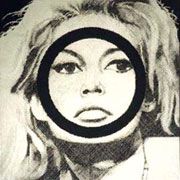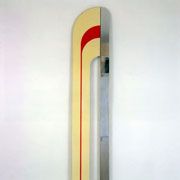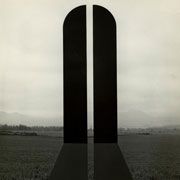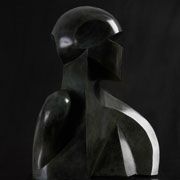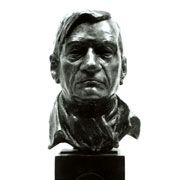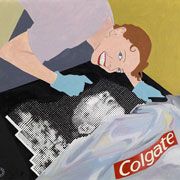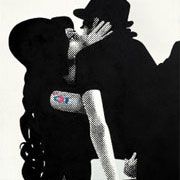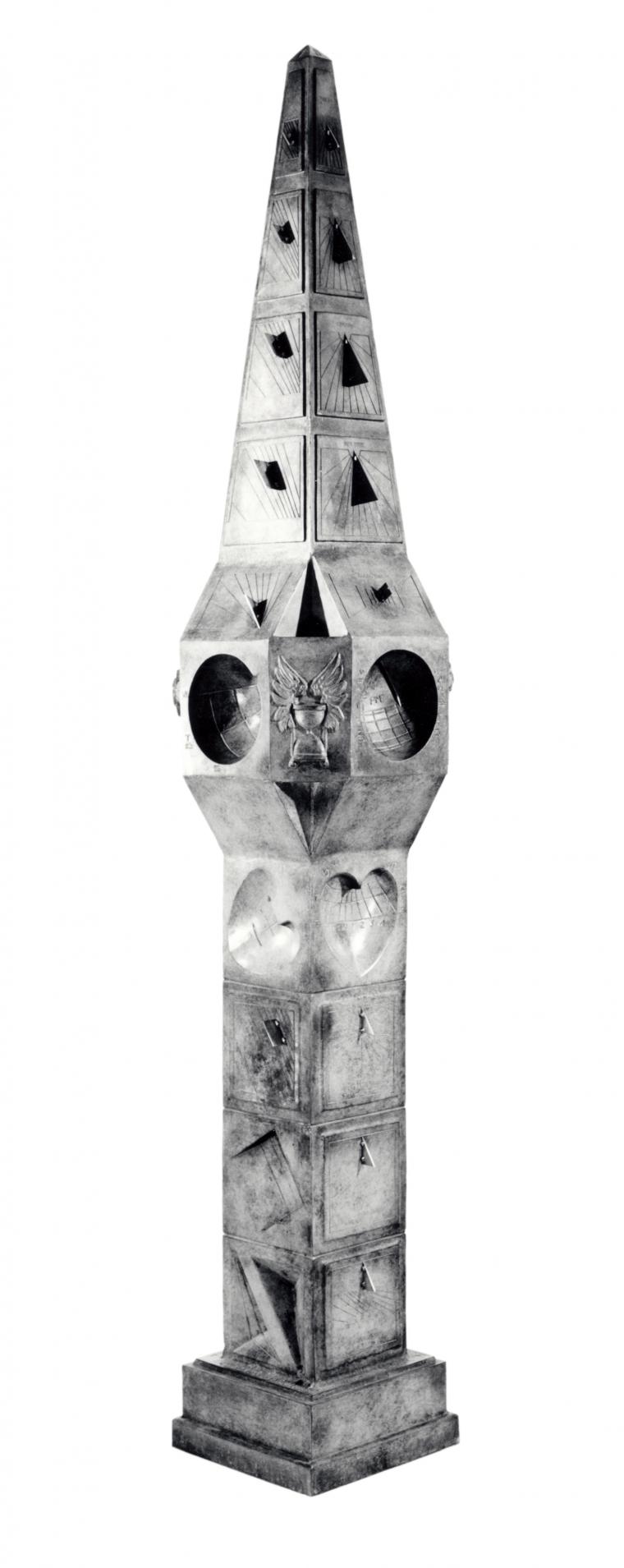
Catalogue Raisonné. The Dunphail Obelisk Sundial
Search the Catalogue
The Dunphail Obelisk Sundial
Catalogue No. 542
Artist's CR 504
December - March, 1989
Kinkell
Bronze
74 x 12 x12 inches / 188 x 30 x30 cm
Collection: Unknown
- Gerald Laing, 'The Dunphail Sundial', unpublished manuscript, 1990
- Gerald Laing, 'Dragons at Bank', Whistler, Spring
- Gerald Laing: Sculpture at Chisenbury Priory, exhibition catalogue, Chisenbury Priory, 2002
These obelisk dials have not been found outside Scotland and the earliest was made in 1630 for the 2nd Earl of Perth at Drummond Castle by John Mylne, Master Mason to King Charles I. For some unknown reason no other dated obelisks have been found until 1692; during the 17th century the predominant fashion was for lectern dials, so-called because of their sloping tops which have some resemblance to a reading desk. There are two fine examples of these at Darnaway Castle. But the last lectern to be dated is 1684 (except for a few whose dates are suspect) and obelisks then replaced them in fashion. The last is no later than 1731 and 25 complete examples are known to survive at the present time, though there are many incomplete fragments. Apart from these two very standardised types, there are many other less easily classified complex dials in Scotland, usually grouped together as ‘facet-heads’ and all of them are either unique to
Scotland, or more numerous, and earlier, than similar dials in other countries.
The reasons for this fashion, which lasted only about 100 years, are obscure. England in the same period also had complex dials, but of a very different type, more like astronomical compendia which gave information about the altitude and azimuth of the sun, times of sunrise and sunset, a more detailed calendar scale, corrections for use as a moon-dial and for estimating the time of high tide, tables for calculating the date of Easter and other festivals etc. The Scottish dials are much simpler than these and are not even very practical time-keepers as their faces are so small and often awkwardly placed.
My belief is that they were made primarily for symbolic reasons. This period in Scotland was still an age of transition between magic and science and it was also the time when the lodges of working masons were being transformed by the acquisition of members from the landowning and educated classes, apparently in search of esoteric knowledge which the masons were believed to have guarded from the days of Solomon’s Temple. Freemasonry, in the modern ‘speculative’ sense, is believed by some
historians at least to have arisen in Scotland at this time. Many of the dials have symbols such as the sun, moon and five-pointed star, which represent the Hermetic Trinity of Mens, Intellectus and Amor, and the Heart, used by the mystics to symbolise the ‘Way of Love’ for achieving ‘Renaissance’ or re-birth. One of the prime objects of the early Freemasons was to find some way of uniting men of goodwill, despite the splits in the Church following the Reformation, and a characteristic of these multiple dials is that all the gnomons must point to the Pole Star regardless of the orientation of the faces. It seems to me that this symbolises the constant element of Faith which is common to all the different creeds, and the essential unity of mankind.
'The Dunphail Sundial', Gerald Laing, unpublished manuscript, 1990

